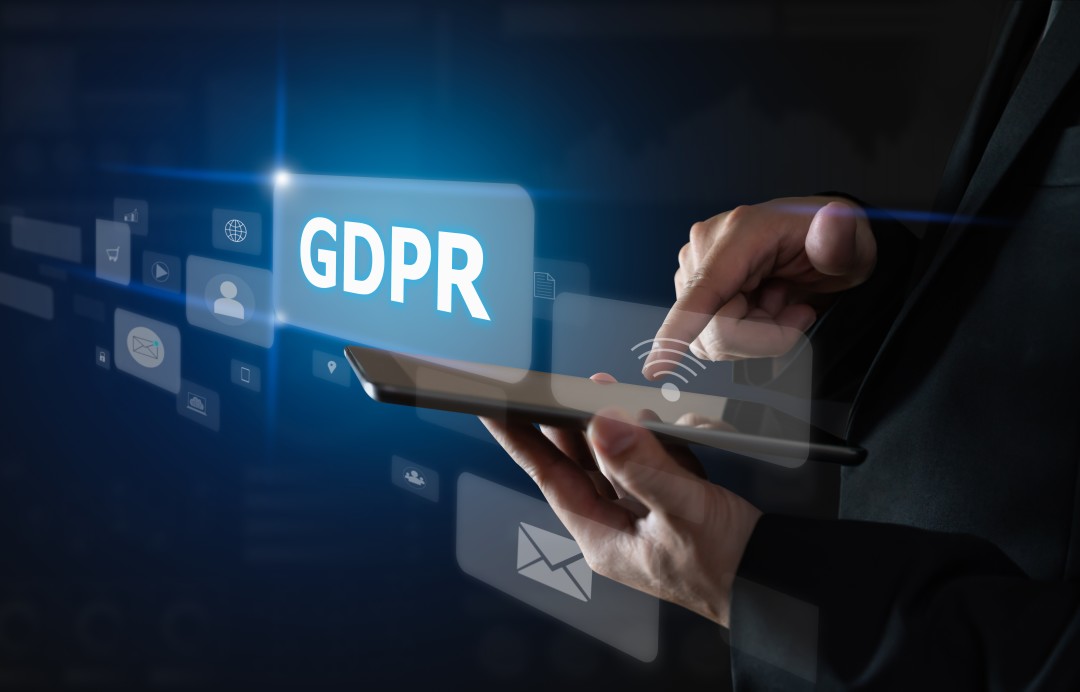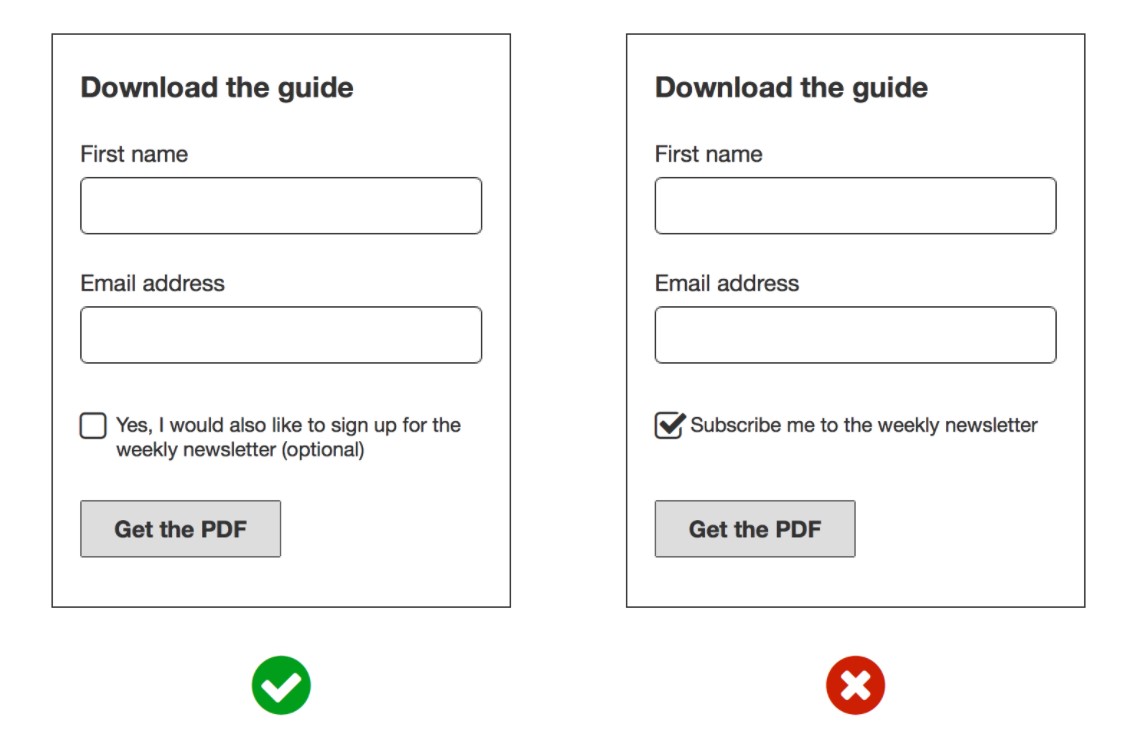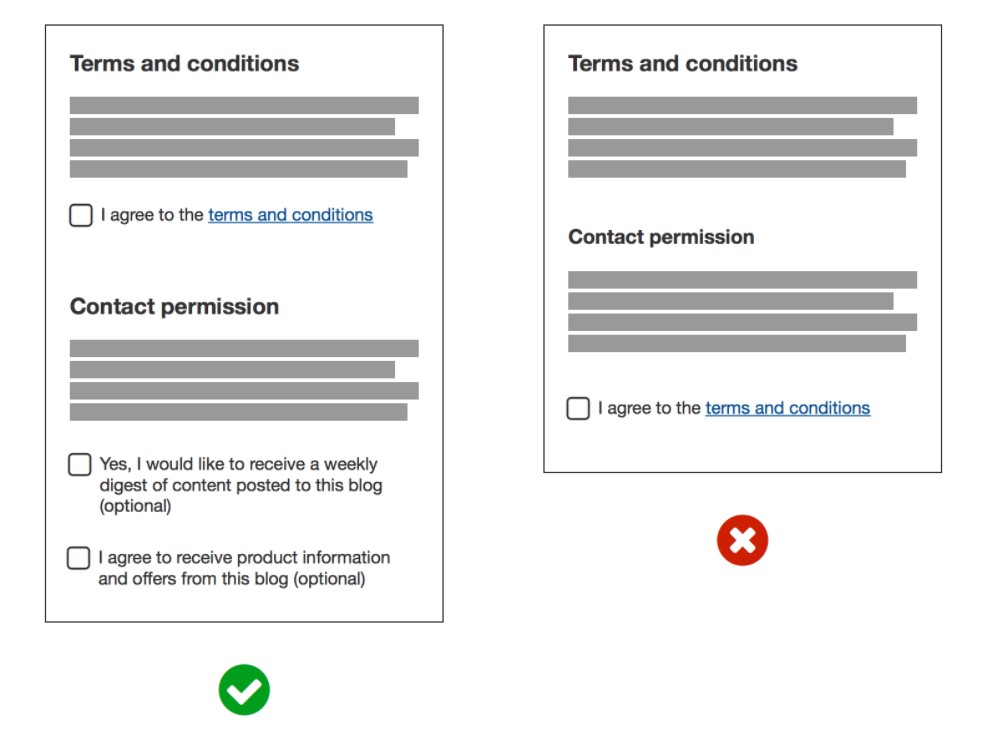GDPR Email Marketing: Everything You Need to Know
In 2018, European policymakers adopted a radical data privacy law called the General Data Protection Regulation (GDPR). Namely, GDPR targets protecting European citizens by regulating how companies handle their users’ online data.
GDPR is closely connected to email marketing. As a matter of fact, this form of marketing depends on collecting personal data. By understanding what GDPR covers and following a few simple strategies, you can more easily ensure compliance and avoid penalties.
So, in this blog guide, we’ll show you everything you need to know about GDPR email marketing. Let’s get going!
First of all, what is GDPR?
As we mentioned above, GDPR is a new set of laws in the EU (European Union), which protects user digital privacy and regulates various types of online consent. The regulation hasn’t been around for very long yet - it actually went into effect in May 2018.

The main goal of GDPR is to give EU citizens more control over how their private information is collected, stored, and used online. It assigns new responsibilities to websites that gather visitor and customer data, like obtaining informed consent and enabling users to delete their data if requested.
What’s most important to understand GDPR is that it applies to any website that collects data of EU citizens, regardless of where the website owner or company is located. That means even if your business is not located in Europe, the GDPR will almost certainly affect you.
How will GDPR affect email marketing?
As an email marketer, email marketing under GDPR essentially means that you need to gather freely given, specific, informed, and unambiguous consent (Article 32). In order to achieve compliance, you have to adopt the following new practices:
- New customer opt-in permission rules
- Proof of consent storing systems
- A method through which customers can ask their personal data to be removed.
As stated on the official GDPR website, personal data can be anything from a name or a photo to a personal IP address or sensitive medical data. Therefore, when we take into account the huge number of personalized emails marketers send out every day, it becomes obvious why the GDPR has such a strong effect on email marketing.
Related topic: Permission-based Email Marketing: The Ultimate Guide
What if you don’t comply with the GDPR?
Non-compliance with this regulation comes with a huge monetary penalty. Businesses could face penalties of up to 20 million euros (€20 million) or 4% of their total worldwide annual turnover from the preceding financial year, whichever is higher.
How can you benefit from being GDPR-compliant?
By being GDPR-compliant, you can benefit from:
-
Clean email marketing. Abiding by GDPR, you’ll reach out only to the people who really want to connect with you. Your email engagement rates will increase, and you’ll end up with better conversions.
-
Goodwill from customers. Actually, due to the transparency in your email marketing approach, customers will tend to stick with you, while a sense of trust can be built between your brand and customers.
-
Increased revenue. With higher conversions and improved email performance, you’re able to improve your email marketing ROI. And ultimately build a stronger brand image.
7 strategies to make your emails and newsletter GDPR-compliant
In this part, we’ll cover some practical ways to ensure that everything about your email marketing activities can follow GDPR guidelines.
1. Publish your own privacy policy
Companies engaged in email marketing publish a clearly-stated privacy policy, which identifies the collected data and discloses how that data will be used.
Your privacy policy must be accessible on your site, but when you manage an email newsletter, you should make your policy available to potential and existing subscribers. Users that already opted-in should see a link to your privacy policy somewhere that is clearly visible in the newsletter. When users are presented with your opt-in form, they should see a link to your policy on the form.
Making your privacy policy accessible is a part of practicing transparency in data collection, and that’s a key element of GDPR compliance.
2. Get your opt-in forms right
The process of obtaining consent from users must be straightforward with a clear “opt-in” action.
An attempt to get your form to automatically opt-in users is against the rules. For instance, if a checkbox on your form is what indicates that a person is giving consent, you can’t preselect that checkbox, making the default selection be “Yes, I give consent.” instead, the user must be the one to take action to give consent.

In addition, the consent statement must be clear, specific, and granular; that is, there needs to be separate permission given for each planned use of gathered data, including when you obtain acknowledgment of your own Privacy Policy or Terms and Conditions.

If you bundle a request for one permission with that of another, it is considered deceptive, and is in violation of the GDPR. It is best to use multiple checkboxes as necessary.
One more thing you need to decide when acquiring consent is whether to use a single or double opt-in. Single opt-in mechanism for managing email subscriptions refers to one form that displays consent details, a place to enter an email address together with a submit button. Single opt-in is GDPR-compliant, but in fact, many businesses choose to employ a double opt-in.
A double opt-in starts with the same type of form found in the single opt-in method. However, after subscription, the user will receive an email from your system, which requires them to click a link as the final act required to give permission. A double opt-in helps you ensure GDPR compliance, as it’ll create a more complete record of proof that the user gave permission.
3. Keep records of consent
GDPR requires you to store a record of user consent, including:
- The user’s identity who has provided consent
- The consent date
- A detailed statement regarding what the user consented to
- A comprehensive description of what the user was told at the time the consent was given
In addition, the stored consent records must include information about the methods used for getting consent, whether a user who gave permission later withdrew it, as well as a statement about the legal conditions that were applicable when they gave consent.
If you don’t store these records, the consent you obtain from your users will be considered invalid.
4. Adhere to content guidelines
The rules set out by the regulation are, in part, meant to make sure that your email content is honest and not intended to mislead users. To that end, there’re requirements pertaining to the content of your newsletter.

Your email newsletter must:
- Identify the sender
- Specify your physical company address
- Be straightforward in stating the nature of your message, disclosing your communication’s purpose, and indicating whether it’s promotional content
- Include a clearly visible unsubscribe link
- Exclude false or deceptive statements in your newsletter’s content
Another essential aspect of GDPR content guidelines is that your newsletter must contain only the content type that the user gave consent for. For example, if you requested and received permission to send users emails about your new products/ services, but you sent them a promotional email with offers from a third party, it would be a violation.
If you’d like to send multiple types of email content, you’ll have to obtain consent that is specific to each intended use. This doesn’t mean managing an array of various opt-in forms - you can simply add multiple checkboxes to one form, labeling the checkboxes to inform your users of the intent behind each content type.
If you comply with these guidelines, you can provide more value with your email newsletter and steer clear GDPR violations.
5. Don’t rely on a third party for compliance
Even if your email marketing is handled by a third party email marketing service, you’re still the owner of the data. As such, the responsibility for legal compliance for managing that user data is on you.
In case you turn over management of your email marketing to a third-party, whether that is an application or a commercial service, the third party will also have legal obligations, specifically, to make sure that all its customers meet regulatory standards. But they won’t be alone on the hot seat if GDPR violations are uncovered.
Most email marketing management platforms require that their users have published a comprehensive privacy policy. That’s as far as they go facilitating adherence to GDPR rules.
For that reason, it’s critical to note that, if you use a third party to manage your email marketing activities, your business - as the owner of the collected data - is the entity that is primarily responsible for obeying GDPR guidelines.
6. Make it easy to unsubscribe
It’s required that you make it easy for users to revoke permission. You will need to provide an unsubscribe link in your email, and it must be visible and easily accessible.

When a user withdraws their consent, you will have 30 days to honor that request. If they still receive a newsletter after they’ve unsubscribed, it won’t matter if it has been 30 days or 1 day - that user won’t be pleased.
If you act well on every opt-out request as soon as it’s made, you can actually avoid alienating users, maintain a healthy relationship with them, and show that you’re always respecting them.
7. Limit the personal data collected
Email marketers can be guilty of collecting more information from an individual than they need. GDPR encourages a level of consciousness that fosters a culture where email markers only pick information that is pertinent to their needs.
That being said, businesses should get into the habit of deleting all the superfluous personal data from their CRM (Customer Relationship Management) systems to focus on aggregated non-identified data to produce generic email marketing campaigns, and thus reduce the risks of exploitative fines or loss of reputation.
The bottom line
User privacy is extremely important, especially when it comes to gaining their trust. GDPR tries to prevent any misuse of personal data, but the regulation isn’t all that bad. Instead of buying shady email lists, you’ll actually market to people who want to receive your offers. This will increase engagement and give your brand the credibility it deserves. GDPR significantly impacts your email marketing efforts in a good way.
Although you need to make some small adjustments to how you run your email marketing campaigns, GDPR is actually a positive regulation. It can open doors to transparency and prevents businesses from having an unfair competitive edge over other businesses in the industry.
New Posts

How To Set Up Google Analytics 4 For Your BigCommerce Store






